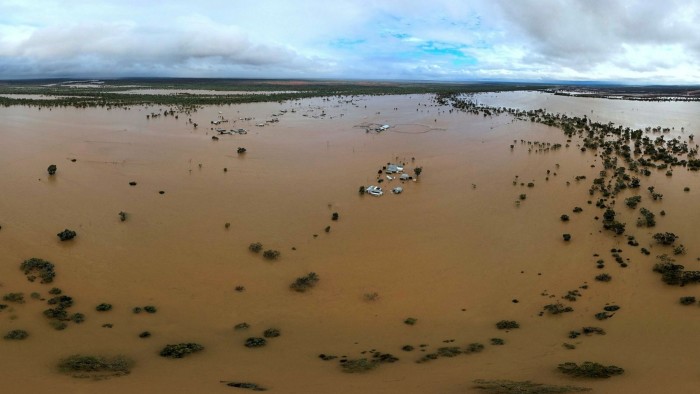Unlock the Editor’s Digest for free
Roula Khalaf, Editor of the FT, selects her favourite stories in this weekly newsletter.
Extraordinary springtime temperatures in Central Asia have coincided with drought and extreme floods in vast areas of Australia greater than the size of Texas and fires in South Korea.
Researchers at the World Weather Attribution (WWA) group, which carries out rapid analysis of weather events, said the high temperatures in Central Asia were 10C above the pre-industrial level at about 30C.
Climate change made this “bonkers” heatwave around 4C more intense and about three times more likely. They flagged that these figures were likely conservative estimates.
To map the temperature data we turned to Nasa’s Giovanni application.
Its user-friendly interface makes selecting climate data for a specific area and time period very simple. It has a wide range of atmospheric (and other) variables with differing temporal and spatial resolution.
This might not deliver absolutely every metric you need but it’s a good one-stop shop for quick turnaround data graphics. The search result is visualised in-browser, before you have the option to download the underlying data.
The resulting temperature anomaly data of the heatwave was pulled into Qgis, the FT’s geospatial software of choice, for styling. A diverging blue-red colour palette was used, a standard choice for temperature anomalies.
Since we’ve visualised temperature anomaly data many times and in many different ways, I wanted to look at some additional data.
The UK has had an exceptionally dry, warm and sunny spring so far and the Met Office recorded the sunniest March in England since measurements began in 1910 (third-sunniest for the UK overall).
While more of a weather than a climate graphic, this record inspired a chart on English sunshine.
The Met Office publishes sunshine data on their website, providing breakdowns by region. Besides the typical temperature parameters, this page holds sunshine, rainfall, rain days and days of air frost, as monthly, seasonal and annual series.
I downloaded the sunshine data and used the programming language R to reformat it, before creating a barcode plot of the monthly hours of sunshine. Months are across the x-axis, while number of monthly hours of sunshine are along the y-axis (reverse for mobile), and each tile represents a year’s sunshine hours for that given month. [Nerd note: I used geom_tile from the ggplot2 library to create this barcode plot].
Related to this, the Ember research group published monthly electricity data and an interesting visual to go with it. This chart of electricity generation from solar in the UK also shows just how sunny it’s been.
Join us at the Climate & Impact Summit on 21—22 May, hosted in London and online. Bringing together business, finance, and policy leaders, the event is dedicated to driving progress towards the UN Sustainable Development Goals through collaboration, innovation and investment. As a valued subscriber, enjoy 10% off your in-person pass here.


